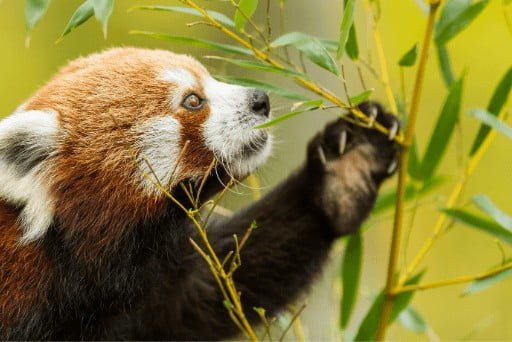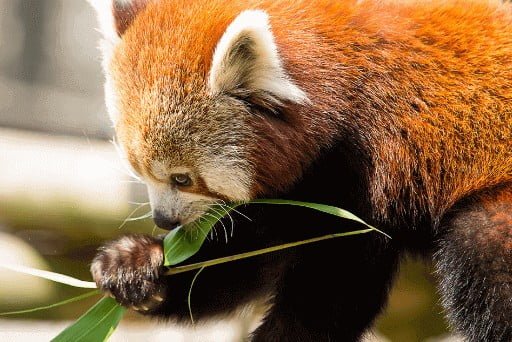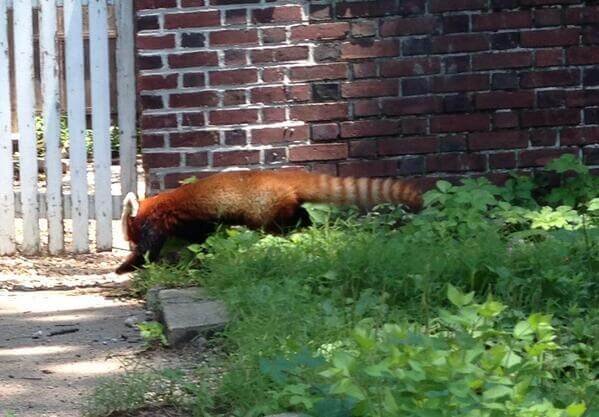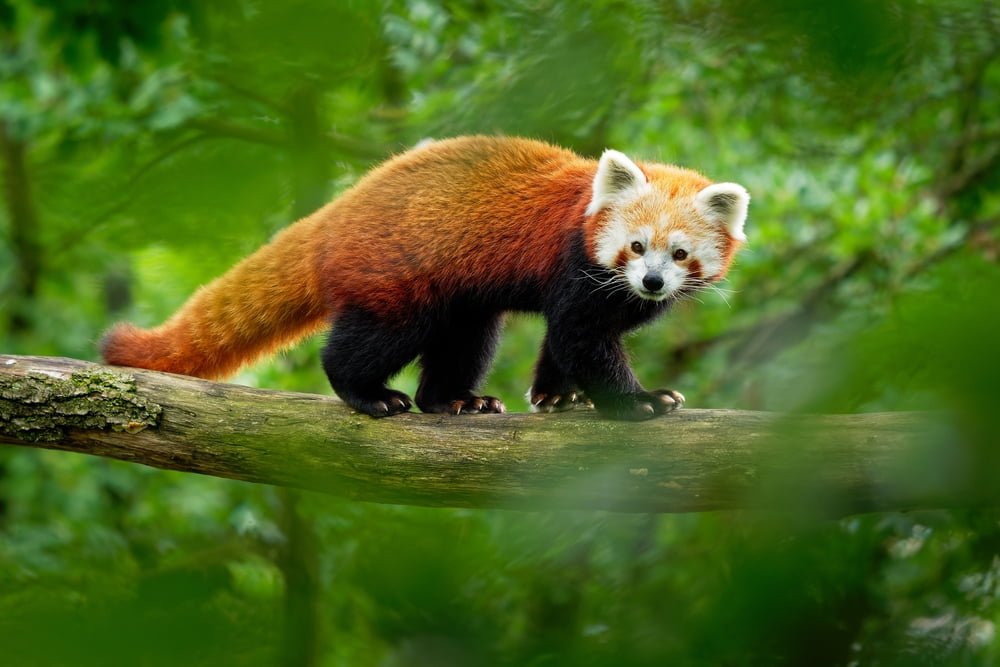Fun facts about Red Pandas that you never knew before
Red Pandas are undoubtedly one of the most adorable creatures you will ever come across. Essentially they are not considered a good option for pets, but people, especially in India and Nepal, keep them in their homes. There is more to know about these creatures than their adorable face. And here we are sharing some fun facts about Red Pandas that will make you fall in love with them.

Is that a thumb or a bone?
The enigmatic “thumb” of Red Pandas has long puzzled researchers and wildlife enthusiasts alike. Surprisingly, this peculiar feature, which resembles a thumb, is not actually a digit but an elongated wrist bone. Initially believed to be an adaptation for bamboo consumption, it was later discovered that even the carnivorous ancestors of Red Pandas possessed this intriguing trait.
In a remarkable case of convergence among vertebrates, a 2006 study shed light on this phenomenon. Convergence occurs when unrelated animals encounter similar environmental challenges and independently evolve to exhibit similar traits. The evolution of the faux thumb in Red Pandas proved advantageous for their arboreal lifestyle, enabling them to skillfully climb trees and aiding in their adaptation to a bamboo diet. On the other hand, the Giant Pandas developed this feature specifically as an adaptation to their exclusive bamboo-based diet.
The deceptive thumb of Red Pandas serves as a testament to nature’s ingenuity, highlighting the astonishing ways in which animals adapt to their surroundings and thrive in their respective ecosystems.

Love for sweets
Another fun facts about red pandas is: they love fake sugar in their diet. A study, published in The Journal of Heredity, aimed to understand the preferences of various carnivorous species when presented with different types of water bowls. The bowls contained plain water, artificially sweetened water, and naturally sweetened water.
The study yielded an intriguing result: Red Pandas displayed a strong affinity for three specific types of artificial sugars – sucralose, aspartame, and neotame. What makes this discovery even more remarkable is that Red Pandas are the only known creatures, apart from apes, humans, and Old World monkeys, capable of tasting aspartame. This ability was previously believed to be unique to these primate species.
The love of Red Pandas for artificial sugars adds another layer of fascination to their already captivating nature. It showcases their distinctive taste preferences and highlights the intriguing similarities they share with certain primate species when it comes to their ability to detect and appreciate certain flavors.
Different place different names
Red pandas are known by various names across different regions. In the Sherpa community, they are commonly referred to as “wah donka” or “critter ye niglva ponva.” Meanwhile, in Nepal, they are recognized as “Bhalu Biralo.” Interestingly, even in the western world, Red Pandas were not always designated by their current name. In 1821, Major Thomas Hardwicke, an English naturalist, delivered a captivating presentation on these delightful creatures at London’s Linnean Society.
During his presentation, Hardwicke put forward the suggestion that the animal should be called “Wha.” This proposition was inspired by the distinctive loud call or cry of the Red Panda, which closely resembled the sound “Wha.” However, it is worth noting that Hardwicke’s paper was not published until 1827. By that time, French zoologist Frederic Cuvier had already described and named the species, which ultimately gave him the authority to assign the official name.
This historical account sheds light on the evolving understanding and nomenclature associated with Red Pandas. It highlights the contributions of early naturalists like Hardwicke and Cuvier in documenting and studying these captivating animals. The story emphasizes the importance of scientific exploration and the continuous refinement of knowledge in our appreciation and comprehension of the natural world.

Carnivores with plant-based diet
Red Pandas fall under the biological classification of carnivores, which encompasses groups like dogs, cats, and bears. However, their dietary preferences are not strictly limited to meat. While some Red Pandas display omnivores tendencies, others lean towards a more herbivorous diet. Their classification as carnivores is due to their evolutionary lineage tracing back to carnivorous ancestors.
In contrast to their categorization, Red Pandas primarily consume bamboo and a small variety of insects, making their diet largely herbivorous. Unlike giant pandas that consume the entire bamboo plant, Red Pandas have a preference for the tender young leaves. Despite the leaves having relatively low nutritional value, Red Pandas spend approximately 13 hours each day foraging and eating, as they need to compensate for the limited nutrient content. Interestingly, during winter, they can lose over 15% of their body weight due to the scarcity of food.
These unique dietary habits and adaptations of Red Pandas showcase their ability to thrive on a specialized and limited diet. Their bamboo-focused eating habits, coupled with the challenges they face during winter, emphasize the remarkable adaptations these adorable creatures have developed to sustain themselves in their natural habitat.
Red Pandas are not actual pandas
A fun facts about the red pandas is, Contrary to their names, Red Pandas are not related to Giant Pandas. However, ten or fifteen years ago, scientists established exactly where these species are on the evolutionary tree of life. It became quite evident that these species belong to the Arctoidea, placing them in the category of pinnipeds, raccoons, bears and mustelids.
The studies also determined that Red Pandas are not related to raccoons or bears like many suggested. In reality, they have their own phylogenetic family along with mustelids, raccoons, and skunks.

Master of escapes
This species is known for its exceptional escape skills. One of the greatest examples of their escape is Rusty, the Red Panda, who has been living in the Smithsonian National Zoo. Within just being there for three weeks, this little one decided to escape.
How did he manage? His escape method was to push down a tree over the enclosure of the electric fence.
After this incident, Twitter was loaded with an ensuing panda hunt with the hashtag #findrusty. He was later found in the neighborhood close to the zoo.
A similar escape happened in Dresden, Germany, where the Red Panda pushed down the tree using a fire hose. But it ended up falling 30-feet down, resulting in a concussion.
Final Thoughts
For years, Red Pandas have lived in the shadows of more famous pandas. However, over the years, they have gained massive popularity. Whether it is their adorable looks or quirky personality, you cannot help but fall in love with them. Unfortunately, Red Pandas are endangered species. As per the World Wildlife Fund, there are less than 10,000 Red Pandas left. And further habitat destruction can increase the chances of this species extinction. Moreover, they are often killed when caught in traps for other animals.
FAQs About Red Pandas

Are red pandas related to giant pandas?
No, despite the similar name, red pandas are not closely related to giant pandas. They are more closely related to raccoons and belong to the family Ailuridae.
What do red pandas eat?
Red pandas primarily feed on bamboo, which makes up around 98% of their diet. They consume a large amount of bamboo leaves each day to meet their nutritional needs. However, they may also eat other foods like eggs, insects, flowers, birds, and small mammals when available.
Where do red pandas live?
Red pandas are native to the Eastern Himalayan region, including parts of Nepal, Bhutan, and China. They inhabit temperate forests at elevations ranging from 4,900 to 13,000 feet.
How many cubs do red pandas have?
Red pandas typically give birth to one to four cubs, with two being the most common. The cubs are born between June and September and stay in their den for the first few months. Red panda mothers provide care and protection to their cubs, similar to how bears and other carnivores do.
Are red pandas endangered?
Yes, red pandas are classified as an endangered species. They face numerous threats, including habitat loss due to deforestation, illegal hunting, and climate change. Conservation efforts are crucial to protecting and preserving their populations.
How long do red pandas live?
In the wild, red pandas have an average lifespan of 8 to 10 years. In captivity, where they receive proper care and protection, they can live up to 15 years or more.
Can red pandas be kept as pets?
No, red pandas are wild animals and should not be kept as pets. They require specific habitats, diets, and social interactions that cannot be adequately provided in a domestic setting. It is illegal in many countries to own a red panda as a pet due to its endangered status and conservation concerns.





